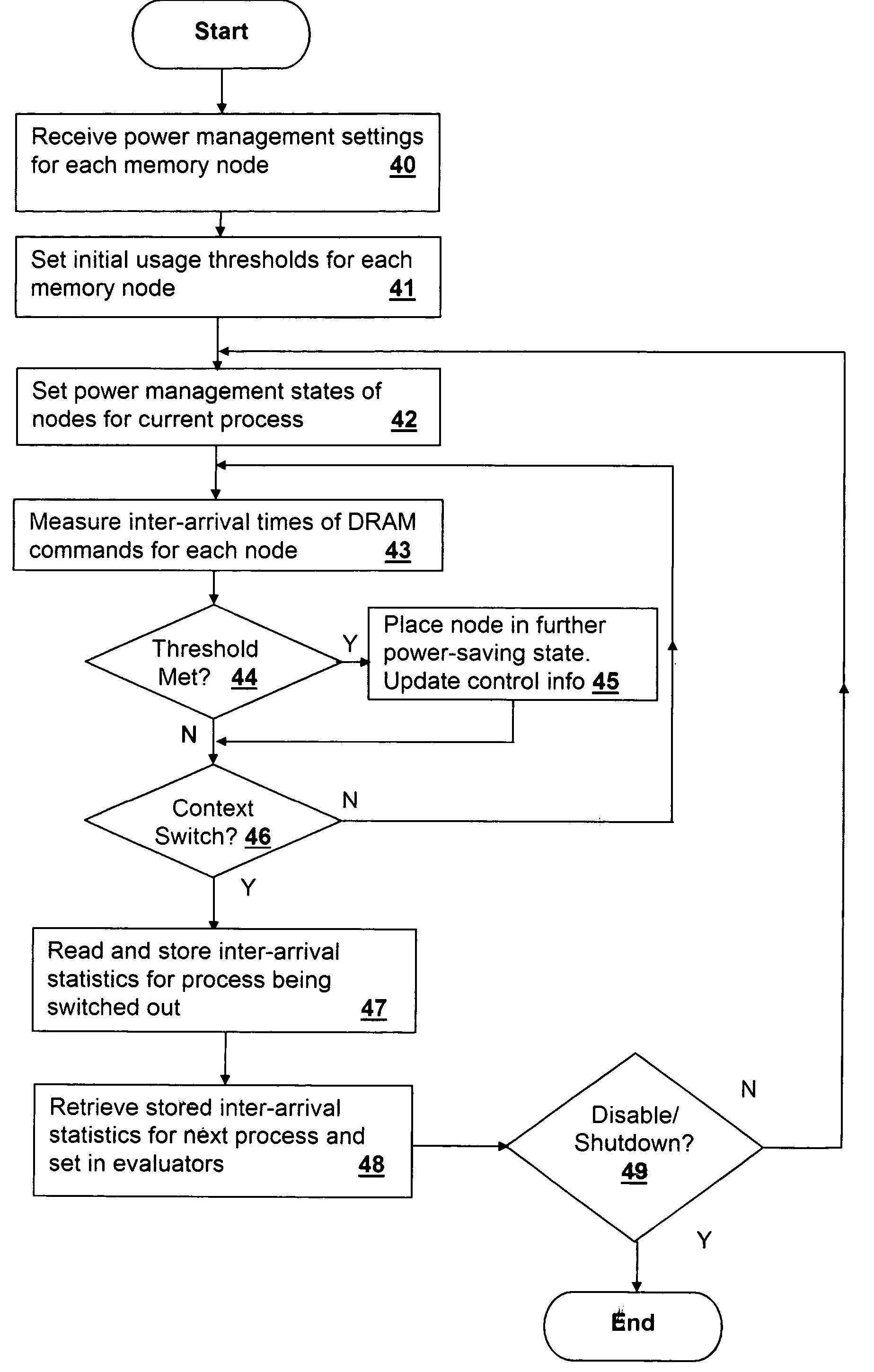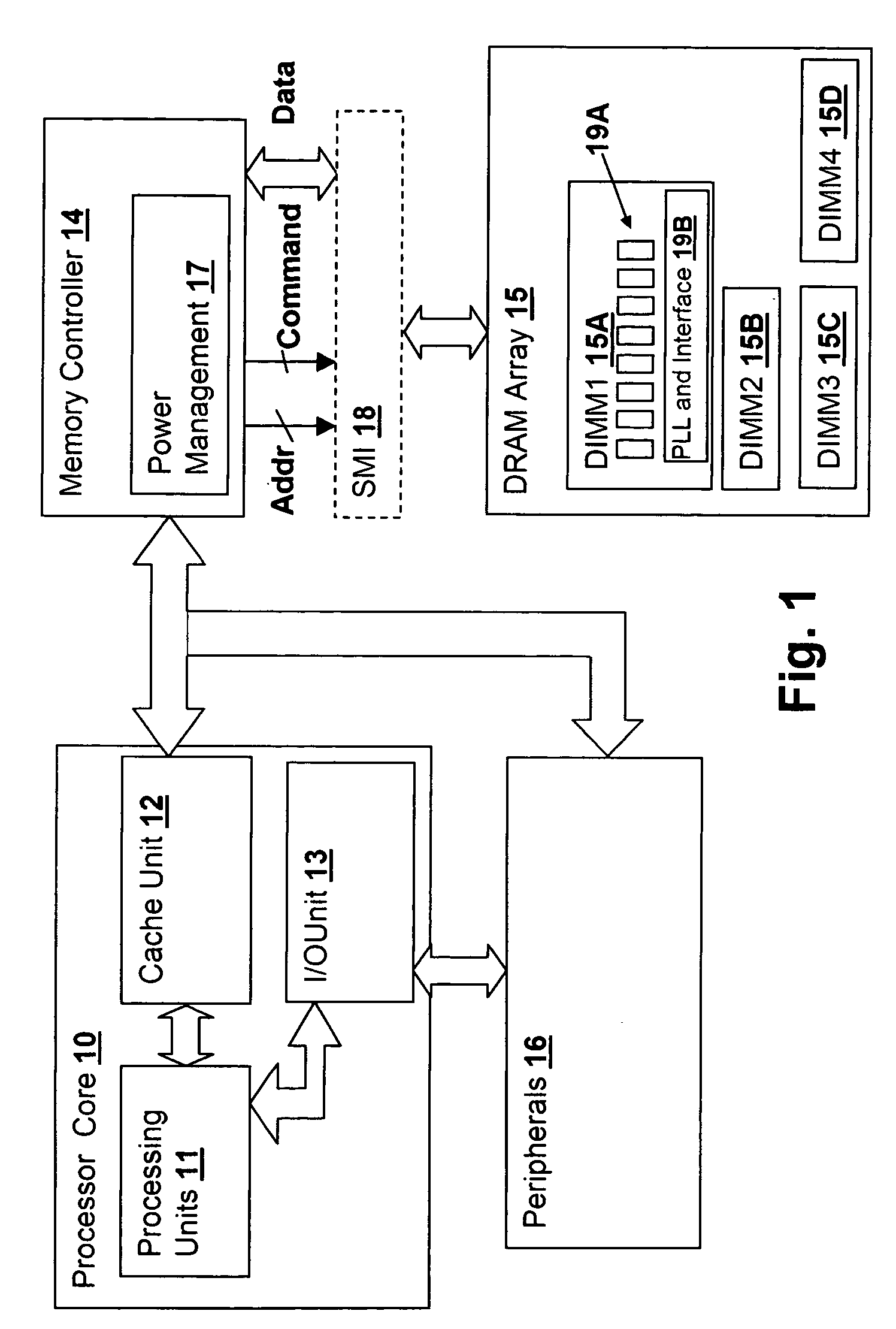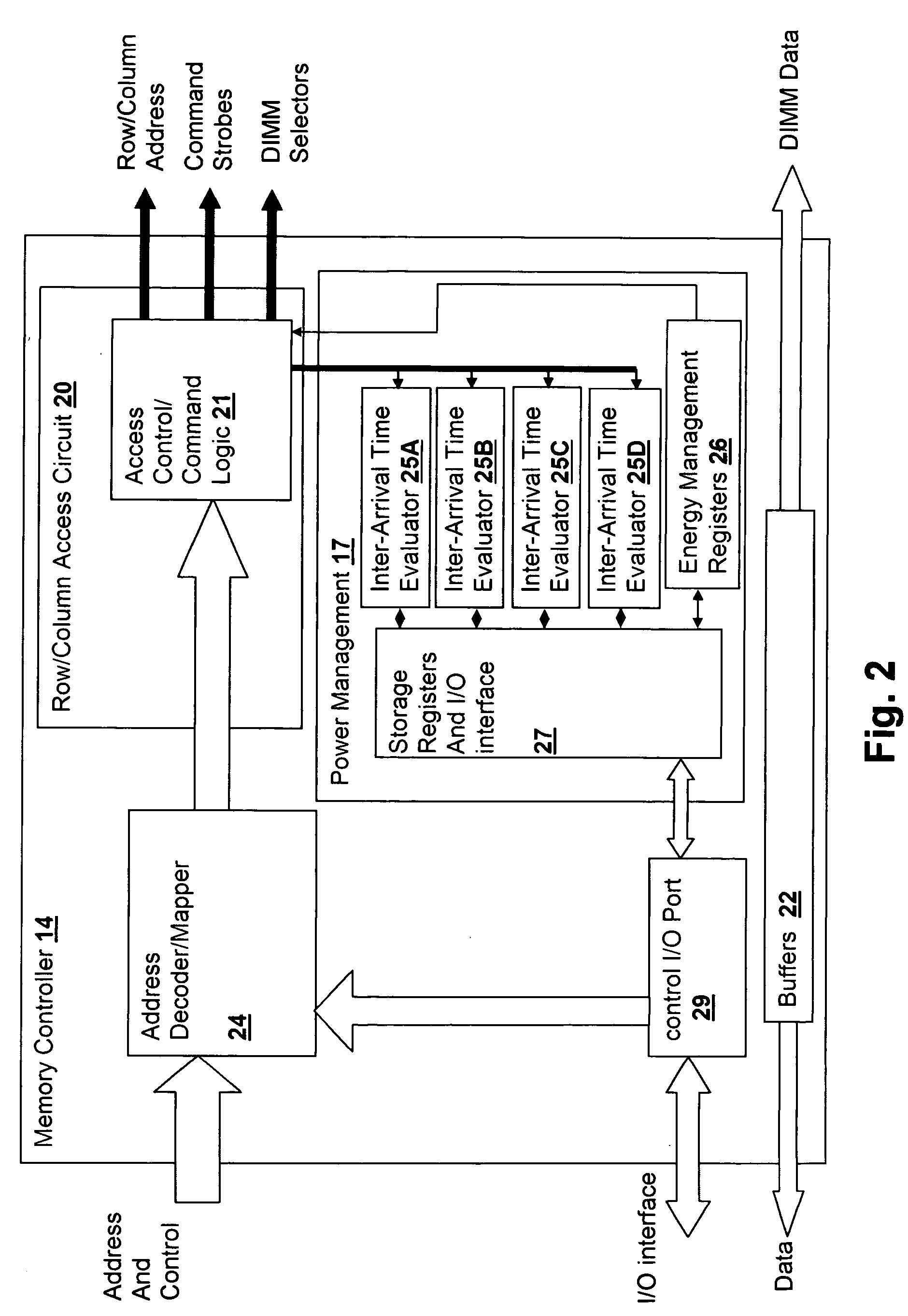Method and system for power management including device controller-based device use evaluation and power-state control
a technology of power management and device controller, applied in the direction of liquid/fluent solid measurement, sustainable buildings, instruments, etc., can solve the problems of system exacerbate the problem, reduce processing throughput, and the total available power supply is not designed, so as to reduce power consumption and low latency
- Summary
- Abstract
- Description
- Claims
- Application Information
AI Technical Summary
Benefits of technology
Problems solved by technology
Method used
Image
Examples
Embodiment Construction
[0018] The present invention concerns local control and evaluation of power management settings at the device controller level within a processing system. Past power-management schemes have involved the processing elements and operating system software in setting power management levels either via device controller commands or via direct control of power management states of controlled devices. Therefore, per-process granularity of power management device settings in past implementations is therefore typically limited to a time-slice interval. Further, actual implementations do not typically manage power on a per time-slice basis, due to the operating system and processor overhead that would be incurred. Existing mechanisms also typically lose any device usage measurements at a context switch, or cannot differentiate between the use of the devices by different processes. The present invention provides for measurement and evaluation of device usage on a per-process basis by providing...
PUM
 Login to View More
Login to View More Abstract
Description
Claims
Application Information
 Login to View More
Login to View More - R&D
- Intellectual Property
- Life Sciences
- Materials
- Tech Scout
- Unparalleled Data Quality
- Higher Quality Content
- 60% Fewer Hallucinations
Browse by: Latest US Patents, China's latest patents, Technical Efficacy Thesaurus, Application Domain, Technology Topic, Popular Technical Reports.
© 2025 PatSnap. All rights reserved.Legal|Privacy policy|Modern Slavery Act Transparency Statement|Sitemap|About US| Contact US: help@patsnap.com



